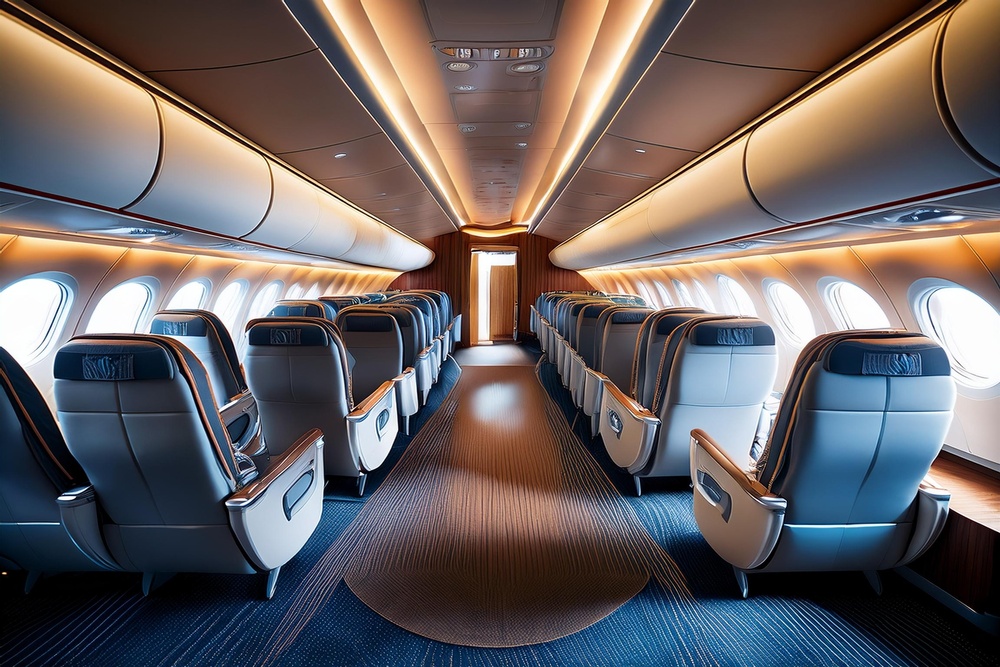Remember those flights that left you feeling like you’d been folded into a suitcase? Airlines packed people in like sardines and called it good enough. That’s changing fast. Today’s aircraft put real thought into keeping passengers happy during those long hauls across the Pacific. The shift goes way beyond free pretzels and an extra inch of legroom. Engineers rip apart old assumptions about flying. Psychologists study what makes people anxious at altitude. Materials scientists cook up fabrics that stay fresh after a thousand hours of use.
Seat Design Gets Smarter
Airplane seats sucked for decades. The padding squashed flat before you reached cruising altitude. Your back screamed after two hours. Your legs went numb after three. Someone finally asked why we put up with this nonsense. New foam remembers your shape but springs back to life for the next person. The flexing frames protect your spine. Carbon fiber replaced heavy aluminum, so seats weigh half what they used to while supporting twice the abuse.
The surprise: economy seats are now thinner, yet more comfortable. Better cushions do more with less bulk. The seat back curves away from your knees. Airlines angle rows so you’re not breathing down someone’s neck. VIP seating stole some economy tricks too, adding heating elements and massage motors to chairs that already cost more than cars. According to the people at LifePort, adjustability changed everything. Headrests slide around to catch your head when you doze off. Armrests vanish when you don’t need them. Back support moves where your back needs supporting. Footrests pop out for shorter passengers. Finally, seats that fit different humans differently.
Breathing Better at 40,000 Feet
Old planes recycled dirty air until everyone felt gross. You’d catch whatever bug the guy six rows back brought aboard. No wonder people stumbled off flights feeling half-dead. New filtration strips out basically everything nasty floating around. The cabin is constantly refreshed with air. Humidity is at a comfortable level. The air up there beats what most people breathe at work.
Different parts of the plane maintain different temperatures now. Hot-blooded folks sit up front where it’s cooler. People who bring parkas to movies cluster in back where it’s warmer. Those little air nozzles above your seat? They push twice the air with half the racket. Some planes create invisible air walls around each passenger. Your own personal weather system at 30,000 feet.
Light and Sound Transform the Experience
Those old fluorescent tubes made everyone look dead. They flickered. They buzzed. They gave people headaches. LED lighting fixed all that. Colors shift throughout flights. Your body clock appreciates the help crossing time zones. Windows got bigger and smarter. Electronic tinting replaced those awful plastic shades that always stuck halfway. Touch a button and the window dims. Touch again and watch the clouds. The whole cabin stays brighter without the glare that makes you squint at your book.
Engineers declared war on noise and they’re winning. Jets run quieter than ever, but the real magic happens inside the cabin. Insulation targets the exact pitches that exhaust human brains. Fancy materials absorb sound waves before they bounce around making everyone crazy. Some planes use the same tech as noise-canceling headphones but for the entire cabin. Conversations happen at normal volume. You land without that ringing in your ears.
Conclusion
Flying might never be as comfortable as your couch at home. But it doesn’t have to hurt anymore. The industry finally learned that comfortable passengers complain less, fly more, and tell their friends good things. That’s a win for everyone cruising through the sky in an aluminum tube, hoping to land feeling human.



